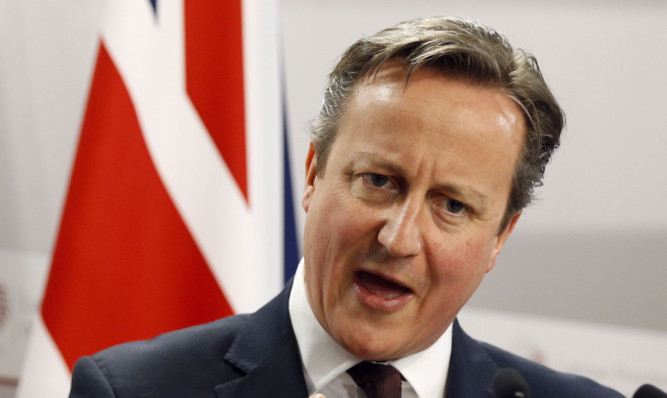
New devolution legislation will make Holyrood the most powerful devolved assembly anywhere in the world, David Cameron has said.
The Conservative Prime Minister included in the Queen’s Speech, as promised, a Scotland Bill extending devolution in the wake of the “vow” made by Westminster leaders in the run-up to last year’s independence referendum.
In her address the Queen confirmed: “My government will bring forward legislation to secure a strong and lasting constitutional settlement devolving wide-ranging powers to Scotland.”
Mr Cameron hailed the overall package of legislation as “the bold first step of a One Nation Government” for working people across Britain.
He claimed that the Scotland Bill, expected to be published tomorrow, would make Holyrood “the most powerful devolved parliament in the world”.
But his legislative package also includes measures aimed at giving English MPs the final say on legislation affecting only England at Westminster.
“Governing with respect means respecting the wishes of the English too,” the Prime Minister said.
“That’s why we will address the fundamental unfairness devolution causes in England by introducing English votes for English laws.”
The Conservative Government says the Scotland Bill will “deliver in full” the package of new powers for Holyrood which was agreed by the Smith Commission – a cross-party body set up in the aftermath of the referendum to look at further devolution.
Holyrood will be responsible for raising about 40% of Scotland’s taxes, according to the UK Government, with powers to set the thresholds and rates of income tax included in the Bill, with all the money this brings in staying north of the border.
The legislation also gives Holyrood some money from VAT revenues and devolves responsibility for air passenger duty and the Aggregates Levy to the Scottish Parliament.
MSPs will also get around £2.5 billion worth of new powers over welfare, the UK Government said, with the legislation allowing ministers north of the border to vary the frequency of the new Universal Credit, and also giving them the power to determine the rules for a range of benefits for carers, disabled people and the elderly.
The Barnett formula, which is currently used to determine public spending in the different parts of the UK will be retained, but the amount Scotland gets in the block grant will be reduced to account for Holyrood being given new tax-raising powers.

Enjoy the convenience of having The Sunday Post delivered as a digital ePaper straight to your smartphone, tablet or computer.
Subscribe for only £5.49 a month and enjoy all the benefits of the printed paper as a digital replica.
Subscribe